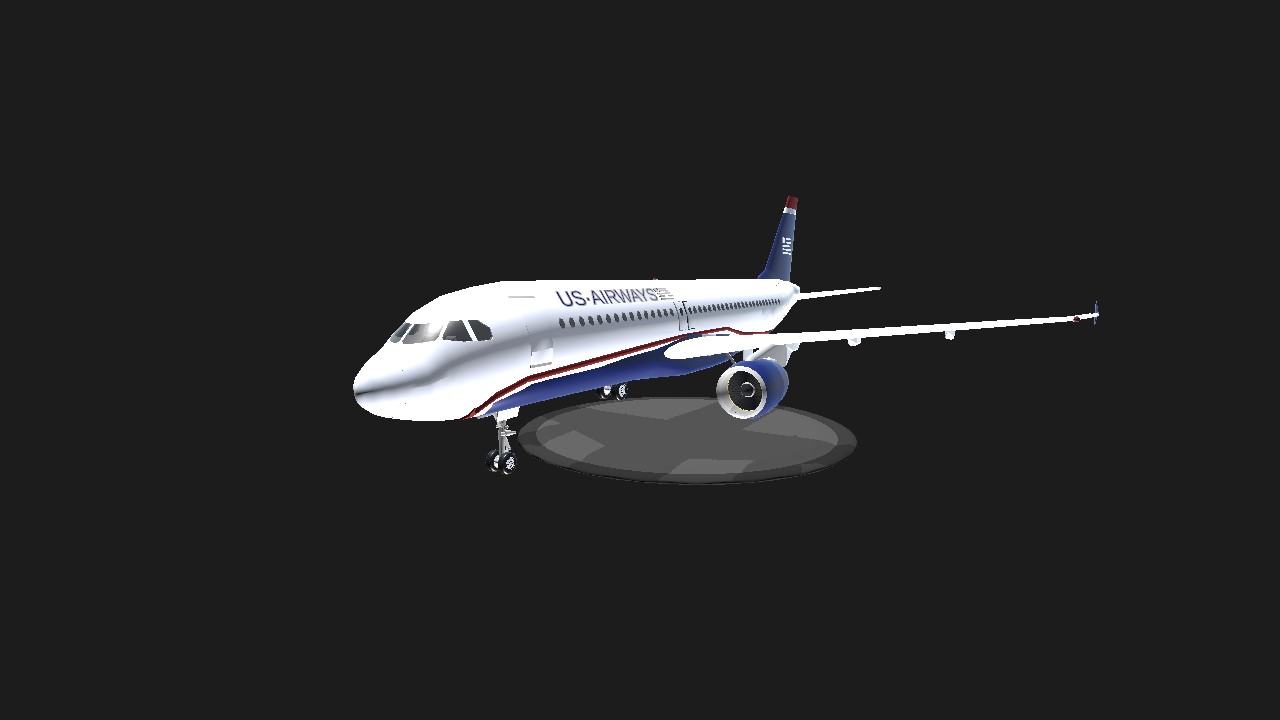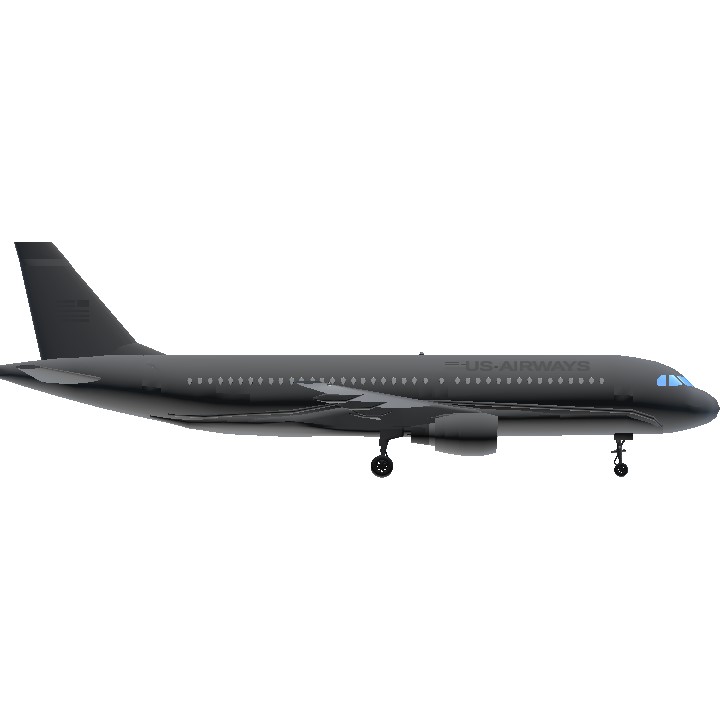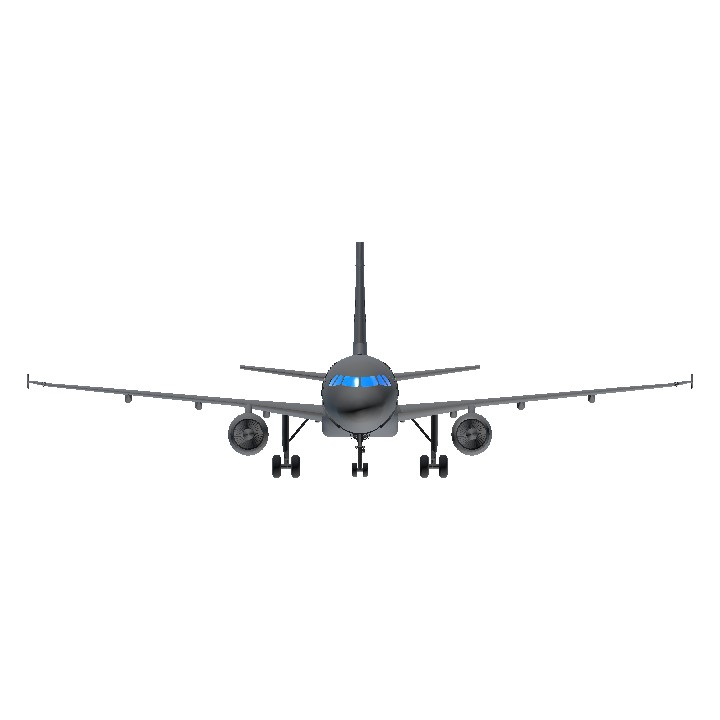Aircraft based on the US Airways flight 1547 and RFS (Real Flight Simulator) by Rortos Flight Engine.
US Airways Flight 1549 was a regularly scheduled US Airways flight from New York City's LaGuardia Airport to Charlotte and Seattle, in the United States. On January 15, 2009, the Airbus A320 serving the flight struck a flock of birds shortly after takeoff from LaGuardia, losing all engine power. Given their position in relation to the available airports and their low altitude, pilots Chesley "Sully" Sullenberger and Jeffrey Skiles decided to glide the plane to ditching on the Hudson River near Midtown Manhattan.[1][2] All 155 people on board were rescued by nearby boats. There were no fatalities, although 100 people were injured, some seriously. The time from the bird strike to the ditching was less than four minutes.
The flight was cleared for takeoff to the northeast from LaGuardia's Runway 4 at 15:24:56 EST (20:24:56 UTC). With Skiles in control, the crew made its first report after becoming airborne at 15:25:51 as being at 700 feet (210 m) and climbing.[22]
The weather at 14:51 was 10 miles (16 km) visibility with broken clouds at 3,700 feet (1,100 m), wind 8 knots (9.2 mph; 15 km/h) from 290°; an hour later it was few clouds at 4,200 feet (1,300 m), wind 9 knots (10 mph; 17 km/h) from 310°.[8]:?24? At 15:26:37, Sullenberger remarked to Skiles, "What a view of the Hudson today."[23]
At 15:27:11, during climbout, the plane struck a flock of Canada geese at an altitude of 2,818 feet (859 m) about 4.5 miles (7.2 km) north-northwest of LaGuardia. The pilots' view was filled with the large birds;[24][25] passengers and crew heard very loud bangs and saw flames from the engines, followed by silence and an odor of fuel.[26][27][28]
Realizing that both engines had shut down, Sullenberger took control while Skiles worked the checklist for engine restart.[c][8] The aircraft slowed but continued to climb for a further 19 seconds, reaching about 3,060 feet (930 m) at an airspeed of about 185 knots (213 mph; 343 km/h), then began a glide descent, accelerating to 210 knots (240 mph; 390 km/h) at 15:28:10 as it descended through 1,650 feet (500 m).[citation needed]
At 15:27:33, Sullenberger radioed a mayday call to New York Terminal Radar Approach Control (TRACON):[30][31] "... this is Cactus fifteen thirty nine [sic – correct call sign was Cactus 1549], hit birds. We've lost thrust on both engines. We're turning back towards LaGuardia".[23] Air traffic controller Patrick Harten[32] told LaGuardia's tower to hold all departures, and directed Sullenberger back to Runway 13. Sullenberger responded, "Unable".[31]
Sullenberger asked controllers for landing options in New Jersey, mentioning Teterboro Airport.[31][33][34] Permission was given for Teterboro's Runway 1,[34] Sullenberger initially responded "Yes", but then: "We can't do it ... We're gonna be in the Hudson".[33] The aircraft passed less than 900 feet (270 m) above the George Washington Bridge. Sullenberger commanded over the cabin address system to "brace for impact"[35] and the flight attendants relayed the command to passengers.[36] Meanwhile, air traffic controllers asked the Coast Guard to caution vessels in the Hudson and ask them to prepare to help with the rescue.[37]
About ninety seconds later, at 15:30, the plane made an unpowered ditching, descending southwards at about 125 knots (140 mph; 230 km/h) into the middle of the North River section of the Hudson tidal estuary, at 40.769444°N 74.004444°W[38] on the New York side of the state line, roughly opposite West 50th Street (near the Intrepid Museum) in Midtown Manhattan and Port Imperial in Weehawken, New Jersey.
According to FDR data, the plane impacted the river at a calibrated airspeed of 125 knots (140 mph; 230 km/h) with a 9.5° pitch angle, flight path angle of -3.4°, angle of attack between 13° and 14°, and a descent rate of 750 fpm.[8]:?48? Flight attendants compared the ditching to a "hard landing" with "one impact, no bounce, then a gradual deceleration".[33] The ebb tide then began to take the plane southward.[39]
Sullenberger opened the cockpit door and gave the order to evacuate. The crew began evacuating the passengers through the four overwing window exits and into an inflatable slide raft deployed from the front right passenger door (the front left slide failed to operate, so the manual inflation handle was pulled). The evacuation was made more difficult by the fact that someone opened the rear left door, allowing more water to enter the plane; whether this was a flight attendant[40] or a passenger is disputed.[8]:?41?[41][42][43] Water was also entering through a hole in the fuselage and through cargo doors that had come open,[44] so as the water rose the attendant urged passengers to move forward by climbing over seats.[d] One passenger was in a wheelchair.[46][47] Finally, Sullenberger walked the cabin twice to confirm it was empty.[48][49][50]
The air and water temperatures were about 19 °F (-7 °C) and 41 °F (5 °C), respectively.[8]:?24? Some evacuees waited for rescue knee-deep in water on the partially submerged slides, with some wearing life vests. Others stood on the wings or, fearing an explosion, swam away from the plane.[40] One passenger, after helping with the evacuation, found the wing so crowded that he jumped into the river and swam to a boat.[33][51][52]
Two NY Waterway ferries arrived within minutes[53][54] and began taking people aboard using a Jason's cradle;[35] numerous other boats, including from the U.S. Coast Guard, were quickly on scene as well.[55] Sullenberger advised the ferry crews to rescue those on the wings first, as they were in more jeopardy than those on the slides, which detached to become life rafts.[35][failed verification] The last person was taken from the plane at 15:55.[56]
About 140 New York City firefighters responded to nearby docks,[57][58][59] as did police, helicopters, and various vessels and divers.[57] Other agencies provided medical help on the Weehawken side of the river, where most passengers were taken.[60]
NOTE: THIS STORY WAS BEEN TOOK FROM WIKIPEDIA.
Specifications
General Characteristics
- Predecessor US Airways Airbus A320-214
- Created On Android
- Wingspan 114.1ft (34.8m)
- Length 123.3ft (37.6m)
- Height 40.3ft (12.3m)
- Empty Weight N/A
- Loaded Weight 44,039lbs (19,976kg)
Performance
- Power/Weight Ratio 1.12
- Horse Power/Weight Ratio 0.068
- Wing Loading 28.0lbs/ft2 (136.8kg/m2)
- Wing Area 1,571.5ft2 (146.0m2)
- Drag Points 10897
Parts
- Number of Parts 514
- Control Surfaces 9
- Performance Cost 3,073





How do I remove any post what made by me xdddd
Lol how do I like crafts at workshop